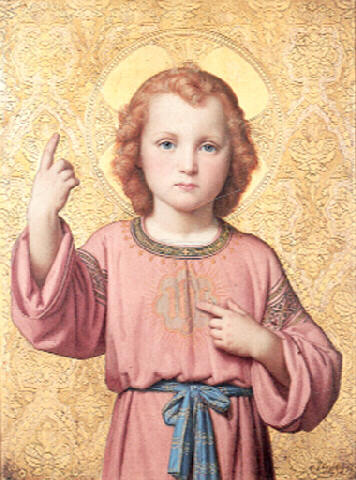Franz Ittenbach (1813-1879)
Get a Ittenbach Certificate of Authenticity for your painting (COA) for your Ittenbach drawing.
For all your Ittenbach artworks you need a Certificate of Authenticity (COA) in order to sell, to insure or to donate for a tax deduction.
Getting a Ittenbach Certificate of Authenticity (COA) is easy. Just send us photos and dimensions and tell us what you know about the origin or history of your Ittenbach painting or drawing.
If you want to sell your Ittenbach painting or drawing use our selling services. We offer Ittenbach selling help, selling advice, private treaty sales and full brokerage.
We have been authenticating Ittenbach and issuing certificates of authenticity since 2002. We are recognized Ittenbach experts and Ittenbach certified appraisers. We issue COAs and appraisals for all Ittenbach artworks.
Our Ittenbach paintings and drawings authentications are accepted and respected worldwide.
Each COA is backed by in-depth research and analysis authentication reports.
The Ittenbach certificates of authenticity we issue are based on solid, reliable and fully referenced art investigations, authentication research, analytical work and forensic studies.
We are available to examine your Ittenbach painting or drawing anywhere in the world.
You will generally receive your certificates of authenticity and authentication report within two weeks. Some complicated cases with difficult to research Ittenbach paintings or drawings take longer.
Our clients include Ittenbach collectors, investors, tax authorities, insurance adjusters, appraisers, valuers, auctioneers, Federal agencies and many law firms.
We perform Franz Ittenbach art authentication, appraisal, certificates of authenticity (COA), analysis, research, scientific tests, full art authentications. We will help you sell your Franz Ittenbach or we will sell it for you.

Franz Ittenbach was a German religious painter from Königswinter, North Rhine-Westphalia, which is at the foot of the Drachenfels. Ittenbach began his art education as a student of Kaufmann and then left to study under Franz Katz in Cologne. In 1832, Ittenbach went to become a pupil, at the age of 19, of the Düsseldorf Academy, where he also received private lessons from its president, Schadow. He was a member of the Nazarene movement and associated himself mainly with three of his friends and fellow students: Karl and Andreas Müller and Ernst Deger. The four men travelled about in Germany, studying and painting together. From 1839 to 1842, Ittenbach lived in Italy. Upon his return, he stayed in Munich for some time. In 1849, he returned to Düsseldorf, and from 1859 until his death, he was a member of the artist club “Malkasten”.

Ittenbach was exceedingly religious and persistently declined any commissions for mythological or pagan subjects. As a rule, he devoted his energies exclusively to church decoration. He would precede the execution of his greatest works with devout religious exercises, including confession and communion.

His finest paintings are said to be found at in the Church of St. Remigius in Bonn and in Breslau in a church dedicated to the same saint. There is also a remarkable Holy Family dated 1861, painted for Prince Liechtenstein in his private chapel near Vienna. Most of his other works can be found in various Catholic churches in Germany. His only important fresco was painted in 1844 in a church in Remagen, Germany.

Ittenbach was a popular painter in court circles, a member of most of the European academies, and the recipient of many medals and decorations. He painted a few portraits, but they were unimportant compared to his famous altarpieces.
Still wondering about a religious German painting in your family collection? Contact us…it could be by Franz Ittenbach.
Reviews
1,217 global ratings
5 Star
4 Star
3 Star
2 Star
1 Star
Your evaluation is very important to us. Thank you.
